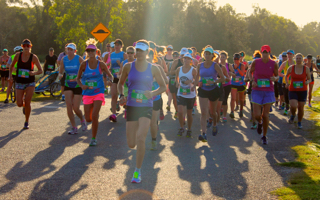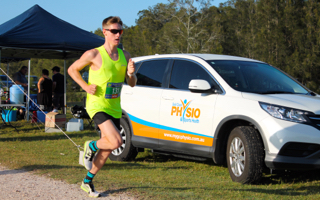Searching for what is “best” Running Technique?
What do I teach for good running technique?
Words by Britt Caling, APA titled Sports & Exercise Physio, Australian Olympic Team Physio, Running Mum and passionate trail runner with a special interest in distance running
O ver my Sports Physio career, I have been lucky enough to have been exposed to a number of Run Coaches, Running Biomechanists, and Physio’s/Podiatrists that have all had a special interest in the technique of running efficiently and injury-free. As a result of this, combined with my own experience as a runner (more recently as an Ultra-runner), and in particular being an injury-prone runner, I decided to put together the GCPSH Run Technique clinic to teach all levels of runners what we don’t necessarily learn when we step out our front door and decide to run. (ps. just because we all work in a Physio clinic doesn’t mean we don’t break! Some athletes are just gifted with a resilient body that can keep up with the motivation of their brain, but I definitely am not one of these.
ver my Sports Physio career, I have been lucky enough to have been exposed to a number of Run Coaches, Running Biomechanists, and Physio’s/Podiatrists that have all had a special interest in the technique of running efficiently and injury-free. As a result of this, combined with my own experience as a runner (more recently as an Ultra-runner), and in particular being an injury-prone runner, I decided to put together the GCPSH Run Technique clinic to teach all levels of runners what we don’t necessarily learn when we step out our front door and decide to run. (ps. just because we all work in a Physio clinic doesn’t mean we don’t break! Some athletes are just gifted with a resilient body that can keep up with the motivation of their brain, but I definitely am not one of these.
 I take solace in knowing all the Injuries I have had help me manage the multiple injuries that present in front of me each week and have forced me to improve my running technique. I can certainly attest to the fact that good running technique improves running efficiency, feels easier and results in less injuries!)
I take solace in knowing all the Injuries I have had help me manage the multiple injuries that present in front of me each week and have forced me to improve my running technique. I can certainly attest to the fact that good running technique improves running efficiency, feels easier and results in less injuries!)
It is generally assumed that because we run around as a kid, we should be able to put our shoes on as an adult and run out our front door with no problems. Wrong Wrong Wrong!
Learning to Run with good technique means a few things:
1. You should become more efficient which will improve your performance
2. Improved efficiency means running feels easier and should be more enjoyable
3. Improved technique means you are able to use and deal with ground reaction forces better which will reduce your risk of injury as you can control the ground reaction forces better.
What do I teach to help achieve good running technique:
 1. As a runner, you need to learn to be a ‘stiff spring’. Stiff springs compared to soft, slinky springs rebound from the ground easier and with less effort. This is how you want your running to feel.
1. As a runner, you need to learn to be a ‘stiff spring’. Stiff springs compared to soft, slinky springs rebound from the ground easier and with less effort. This is how you want your running to feel.
2. Being a stiff spring needs:
* Strong foot muscles and especially strong Calf Muscles and Achilles
* Good pelvic control and abdominal/trunk wall tone (or tension)
* Being able to strike the ground in the right ‘stiff’ way and use the ground reaction forces to assist forwards propulsion
3. Good running posture with forwards lean (forwards lean is NOT a forwards bend at your trunk). This posture will help you direct your forces into the ground that will help propel you forwards.
4. Importance of arms and arm carry to assist cadence and balance in stride
* Correct arm carry helps use muscle/soft tissue tension stretch and recoil so less muscle contractions are required. Your arms can help you achieve good cadence (steps per minute)
* Arm carry needs to be symmetrical, relaxed and balanced to help balance your legs
5. Good leg drive in front of your body that helps you achieve distance per stride in the direction you want to go. This needs good hip range, hip flexor and ab muscle strength.
6. Foot strike (ie how the foot strikes the ground) and learning to minimise forces that decelerate the body and maximise & direct forces that accelerate the body forwards
The Running Technique clinic I conduct on the first Saturday of the month is about introducing you to the above concepts and then progressing your ability to achieve them. Each participant gets individualised feedback with the aim being for each athlete to be able to take home at least a couple of drills that are best for them. Then it’s about “practice makes perfect”.
Find out more about the Run Technique Clinic
When you attend the Run Technique Clinic, we also email you a BONUS Webinar on Running Injuries, minimising injuries and where good technique fits into reducing running-related injuries!!
Tip: If I could give one hint to all parents that I’m sure all Podiatrist would agree with – allow your children to spend some time being barefoot during their growth. This will give them great receptive feedback from the ground and help them develop foot posture and strong intrinsic foot muscles. This will help them as they grow in all aspects of weight-bearing, running included.
Happy, injury-free running!

































